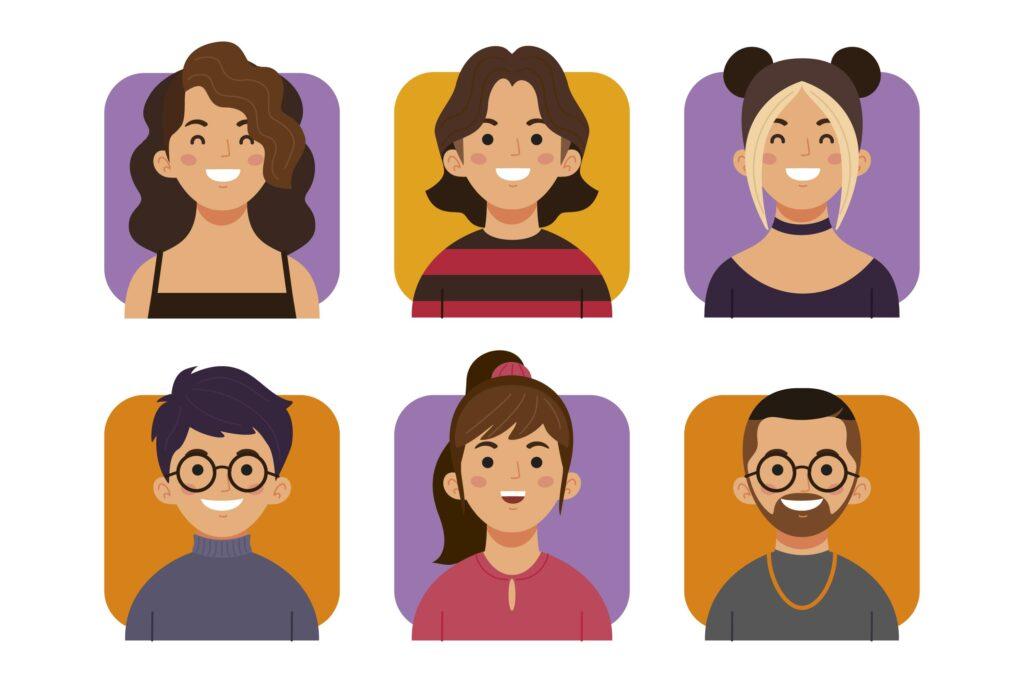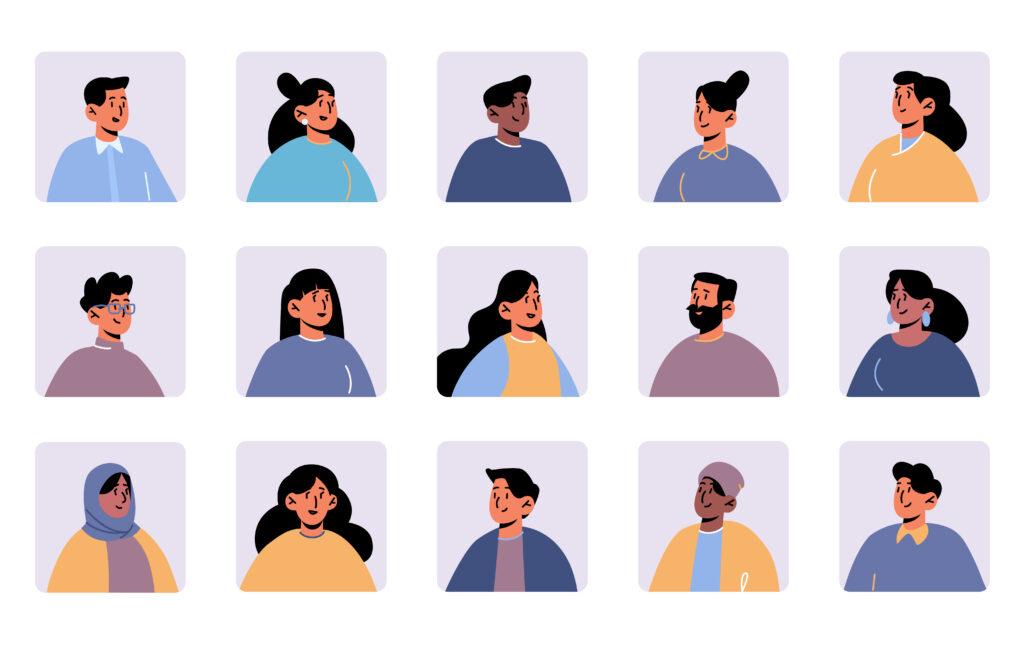Personas Power: Knowing Your Audience Transforms Marketing

In the digital marketing landscape, information and innovation frequently intersect. You may execute paid advertisements, develop compelling content, or construct the most visually appealing website—yet none of these efforts will achieve maximum effectiveness if you remain unaware of your target audience. This is where personas become essential.
A persona represents a partially fictional depiction of your perfect customer, grounded in actual data, research, and creative insight. It transcends marketing jargon; it stands as one of the most valuable tools for directing strategy, communication, and content development.
Consider a persona as your navigation tool. Without this guidance, your marketing initiatives can become directionless—your communications might become overly broad, your campaigns too unfocused, and your propositions too disconnected.
However, with a defined persona, you understand precisely whom you wish to engage, what matters to them, and how to interact with them in ways that feel individualized and captivating. When executed properly, personas enable you to communicate in your audience’s vernacular, predict their requirements, and establish authentic trust.
Also read: Unleashing the Power of Click Marketing As PPC, CPC, and CTR

Creating Customer Profiles with Personality
A persona fundamentally represents a comprehensive profile of your perfect customer. It extends beyond basic demographics such as age, gender, or geography and explores behaviors, drives, obstacles, and objectives more deeply.
A thoroughly developed persona addresses questions like: What concerns occupy their thoughts at night? Which solutions do they actively seek? What reservations might they harbor before completing a purchase?
For instance, rather than targeting “women aged 25–40,” a persona could be “Samantha, 32, a career-focused mother who prioritizes convenience, seeks reliable brands, and battles with carving out personal time.
By assigning your persona a name, history, and particular needs, you personalize your audience. Suddenly, you are not addressing an anonymous demographic—you are communicating directly with Samantha.
This method sharpens your messaging also increases bond and relatability significantly. As in this Hubspot article, a buyer personas can be a big help for you to personalize your marketing.
Also read: Content Marketing for SEO, Practical Guide for Startups and Ecommerces

The Marketing Value of Personas
Many marketers fail to appreciate personas’ influence, frequently choosing broad targeting hoping to reach “everyone.” The reality remains that attempting to reach everyone typically results in connecting with no one. People desire recognition and understanding, which personas precisely help you provide.
Understanding your persona allows you to develop advertisements that immediately capture attention, compose blog posts addressing their specific challenges, and design offers that appear customized for them. Not only the contents, but also the media channel such as social media.
Personas also maintain team alignment: your writers, designers, and sales personnel all share the same vision of whom they serve, creating consistent messaging throughout all channels.
Personas derive their strength from precision. By condensing your audience into distinct profiles, you minimize wasted resources and enhance your probability of reaching appropriate individuals at optimal moments. This approach does not involve excluding potential buyers, it focuses on prioritizing those most likely to convert.
Personalized persona also can help you to strategize your marketing needs that leads to having and effective and efficient source but optimum result.
Also read: How to Convert Clicks to Customers? Guide to Optimizing Landing Pages

Essential Components of Effective Personas
Developing a valuable persona demands more than a basic customer outline. It involves layering details that animate them. A robust persona typically encompasses:
- Demographics: Age, gender, income, education, location, providing foundational information.
- Psychographics: Interests, values, and lifestyles, revealing underlying motivations.
- Obstacles and pain points: Issues your persona actively seeks to resolve.
- Goals and ambitions: Their definition of success.
- Preferred platforms: Their online presence: Instagram, LinkedIn, email, or other locations.
- Purchase patterns: Their research, comparison, and decision-making processes before buying.
The more comprehensive the details, the simpler it becomes to understand your persona’s perspective. During content creation, you will naturally question, “Would this resonate with Samantha? Would she consider this valuable? Would this address her concerns?” This mindset maintains marketing focus and customer orientation.
Also read: 10 Free SEO Tools to Improve Your Digital Marketing Faster

Frequent Persona Development Errors
While personas prove powerful, they become ineffective without proper care. A typical error involves constructing personas based on assumptions rather than information.
The temptation exists to presume audience knowledge, yet assumptions frequently create inaccurate profiles that fail to connect.
Another mistake involves making personas excessively broad, reducing their effectiveness. If your persona resembles a vague description of “everyone,” it provides no actionable guidance.
Marketers occasionally develop personas but fail to implement them. They remain in presentations or documents, ignored while campaigns proceed normally.
A persona should function as a dynamic resource, regularly reviewed as your audience changes. Consumer behavior shifts with trends, technology, and world events—your personas should evolve accordingly. Psychology also plays an important part in customer behavior.
Finally, avoid developing excessive personas simultaneously. While recognizing multiple audience types benefits your business, managing six or seven personas initially can overwhelm your marketing strategy. Begin with one or two strong personas, evaluate your approach, and expand when necessary.

Example:
Practical Persona Applications
Let us examine realistic applications. Suppose you operate a fitness coaching enterprise. You might develop two primary personas:
Persona 1: Beginner Betty – She is 27, maintains a demanding corporate position, and feels uncertain about fitness facilities. Her primary objective involves improving health without time waste. She frequents Instagram and enjoys following wellness influencers. For her, your CTA could state “Begin Your 15-Minute Starter Fitness Plan.” The approach remains warm, accessible, and supportive.
Message Example:
“Hey Betty, we know your schedule is packed, but staying healthy doesn’t have to take hours at the gym. Try our 15-minute starter plan designed for busy professionals. No confusing equipment, no pressure, just simple steps to feel stronger every day. Ready to start small and see real progress?”
Persona 2: Competitor Chris – He is 35, already maintains activity levels, and seeks advanced training programs to enhance performance. He follows fitness podcasts, studies blogs, and participates in online forums. For him, your communication might emphasize “Access Professional Performance Methods.” The approach becomes more authoritative and evidence-based.
Message Example:
“Chris, you’ve already nailed the basics, it’s time to go further. Our advanced performance program is built for athletes who want to break plateaus and unlock peak strength. Backed by proven methods and expert coaching, this is training at the next level. Ready to elevate your game?”
Observe how identical businesses can communicate distinctly based on persona differences. If you attempted using one universal message for both Betty and Chris, you would risk failing both audiences. With personas, your message becomes precisely targeted and highly relevant.
Also read: Create Seamless Brand Experience with Integrated Marketing

Step-by-Step Persona Development
Developing personas involves research rather than speculation. Begin with current customers: Who represents your finest clients today?
Examine analytics from your website, social platforms, and advertising channels to identify demographic and behavioral patterns. Conduct questionnaires or conversations to understand their objectives, frustrations, and product or service priorities.
After collecting insights, synthesize them into one or two detailed profiles. Assign names, include representative images if helpful, and compose brief narratives about their lives. This makes personas feel authentic to you and your team.
Do not stop there, validate your persona by creating campaigns specifically for them. Monitor their responses. If results match expectations, your persona proves accurate. If not, adjust and retry.
Personas should remain dynamic. As your business expands, markets change, and new platforms develop, update your personas to maintain relevance. Consider them evolving guides that mature with your brand.
Also read: How to Choose the Most Suitable Digital Marketing Agency

Key Takeaway: Personas Drive Better Marketing
Personas exceed marketing exercises, they represent customer-focused strategy foundations. Understanding your communication target eliminates energy waste from aimless outreach.
Instead, you provide appropriate messages, at optimal timing, in suitable locations. This transforms browsers into buyers and casual visitors into devoted supporters.
Therefore, before launching your next campaign, pause and consider: Who am I actually addressing? The clearer your response, the stronger your outcomes. With personas directing your path, your marketing will not merely reach people, it will connect.

